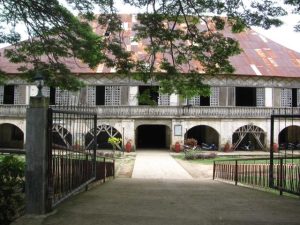From the PAWR Filipiniana Book Shelf we are reviewing the post-modern novel llustrado by Miguel Syjuco. What makes Illustrado special is its fresh take on storytelling. Syjuco challenges the audience to rethink the role of the Filipino Illustrado in Philippine context and history. But more than just a historical fiction, this book provokes us to think deeply about the subject of the illustrado identity.
Narrative, References, and Authorship in the Novel from the Filipiniana Book Shelf
This close reading uses as reference and framework the theories of Roland Barthes and Jacques Derrida. There are three parts on the review’s take on this Filipiniana from the book shelf of PAWR. First, the review will talk about the novel’s narrative structure. Second, the close reading comments on the interplay of historical and cultural references in this novel. And third, and last, the review essays how this Filipiniana book constructs the identity of the author.
Why is a western framework used to read Illustrado? Since it is a novel that blends history, fiction, and a sharp critique of Philippine society, the intricate plotting and multiple layers make it a perfect fit for an analysis using a post-structuralist lens. Framing the reading with a viewpoint toward ‘deconstruction’ and ‘the death of the author’ enables readers to find meaning in the narrative structure.
Western References for the Filipiniana Book Shelf: 1. Barthes' on 'The Death of the Author'
Roland Barthes’ seminal essay, “The Death of the Author,” challenges the notion of authorial intent as the primary source of meaning in a text. According to this theory the author’s intent or biography is irrelevant to the interpretation of a text. Instead, it’s the reader’s subjective experience and interpretation that shape the meaning of the work.
Syjuco blurs the lines between himself and his characters in Illustrado. He includes a fictionalized version of himself as one of the characters. The novel’s jumbled structure, with its mix of emails, blog posts, newspaper clippings, and fictional bits, also fits with Barthes’ idea that a text is a “patchwork of quotes” from many different sources, not just one author. This means the author isn’t the center of the story. Instead, readers make their own meaning, without relying on the “author’s” final word.
The idea of a play in ‘authorship’ is also seen in the main character, Crispin Salvador. As a famous but controversial Filipino writer, Salvador’s works, life and mysterious death are keys to the novel’s plot. However, readers have to piece together his identity from different accounts given by various characters and documents in the text. This mix of perspective makes us question if any single story or source is reliable. It shows Barthes’ idea that the ‘author’ is dead and meaning comes from how the reader interacts with the text.
2. Derrida's Theory: 'Deconstruction' and 'Differance'
Derrida’s idea of deconstruction is like looking at a mirror and seeing two sides. It’s about breaking down the ideas that seem to be opposites and showing how they’re actually connected. He also says that meaning is always changing and never stays the same.
In Illustrado, Syjuco does this by telling a story that’s all over the place. The story jumps around in time, changes perspectives, and tells the story in different ways. This makes it hard for readers to settle into a simple, straight story. This shows Derrida’s idea of meaning being dynamic and always changing, depending on how the reader sees the story.
The novel also looks at an aspect of Filipino identity, culture, and history in a fragmented way. Syjuco shows both his characters and their roles in the country’s history as full of contradictions and complexities. This fits with Derrida’s idea that trying to define or categorize anything is always suspect, because meaning is always changing and depends on the situation.
The theme of differance is also clear in how Illustrado deals with the truth. The novel’s investigation into Salvador’s life and death never gives us a clear answer, leaving us with many different, often confusing versions of what happened. This is an example of truth that can’t be definite and fully known, because it can only be seen through the subjective eyes of the people who are looking for it.
Summary of this Filipiniana Novel in a Review Using Post-Structuralism
Illustrado is more than just a novel; it’s a journey into the heart of Filipino identity and history. Through the post-structuralist lens of Barthes and Derrida, we’re invited to challenge traditional ways of thinking about stories, authors, and meaning.
Taking it from the Filipiniana book shelf, this novel must be read in ways that is beyond analyzing how the elements come together to form one organic unity. Plot, characters, setting, time and memory are shown as points of contentions, making everything unreliable. Syjuco encourages us to dive deep into the story and create our own interpretations, instead of relying on one single “truth.”
From a post-structuralist view Illustrado from the Filipiniana Book Shelf, depicts the notions of Filipino Identity and History as complex and ever evolving.




